It was minutes into India’s Independence Day when police stormed a slum in the western state of Gujarat where Hira Bajania, 65, was sleeping. In the black of night, he was dragged from his home, taken to a nearby police station and accused, with 11 other men, of stealing cell phones.
As dawn broke on a day commemorating India’s freedom, one by one the men were taken from their cell to be interrogated for up to 30 minutes, according to a complaint subsequently filed to police, and seen by CNN. They were bound, stripped, beaten, abused and, according to two people in the group, tortured sexually and told to confess. Many returned to their cell limping, unable to stand or sit, say several of the men. All denied the charges.
At around 5.30 p.m. the next day, Hira Bajania, a ragpicker, collapsed after being beaten. “We told them, ‘He is dead. You’ve killed him.’ The police thought he was pretending,” says Shankar Bajania, no relation, who is one of the men picked up on August 15, 2019.
Hira Bajania was not pretending. Shankar Bajania says he saw, through the police station windows, his lifeless body put in a police jeep. At the hospital, he was pronounced dead.
Hira’s death was not an outlier. According to the National Human Rights Commission (NHRC) of India, a government body dealing with human rights violations, since the start of 2019, at least 194 people died in police custody in India, where police violence is a daily reality, ranging from the use of batons for crowd control to fatal custodial beatings.
Officers are rarely convicted for their actions, often against the most vulnerable members of society, statistics show.
This year, however, a spate of high-profile, brutal police killings have horrified Indian society, igniting a discussion about police brutality – and the uncomfortable relationship between society’s tolerance for that violence and the issue of caste.
Hira, and the others picked up in August, are from the Nat Bajania caste, a disadvantaged community that was legally categorized as a “criminal tribe” by British colonial administrators in the 1800s. That label branded whole demographics as habitual offenders and created a social stigma that has lingered. Shankar Bajania says he and the others did not have criminal records of theft.
“We were picked up only because we were poor,” says the 40-year-old, who earns a living from casual work on construction sites and factories.
So far, no officers have faced charges over Hira’s death.
“(Hira) did die of heart complications, but we are looking into the role of the police personnel involved. We expect a charge sheet against six police officers soon. Action will be taken against them,” says Saurabh Singh, Superintendent of Police in Junagadh who oversees law and order in the district, when asked by CNN about the case.
India’s over-burdened police force has 158 police officers for every 100,000 people. That lack of manpower, coupled with inadequate investment in modern investigation techniques and political pressure to get results, means confessions under torture are often simply the quickest, or only, way to resolve crimes – even if they come at a deadly cost.
‘Torture of the poor has no consequence’
Suhas Chakma, of the National Campaign Against Torture (NCAT), says official figures on these fatalities may be a “gross underestimation.”
The NGO, which uses local media reports to research and tally custodial deaths, says 76% of deaths it recorded in police custody last year were due to alleged torture or foul play, and 19% were under suspicious circumstances in which police cited other causes including suicide and sudden illness. Five children and four women were among the victims.
“The police do not record these deaths if there is no outcry and often try to hide it by saying it was a natural death,” Chakma says.
The NCAT report outlines a gruesome array of torture methods that have sometimes resulted in deaths: beating with a baton, hammering nails into the body, and smearing chili power in private parts. These incidents rarely make the national press. “No one cares. People are numb to it – or many may even support it,” Chakma says.
The Indian government did not publicly respond to the report and the NHRC did not respond to multiple requests for comment. However, in response to questions by parliamentarians, the Ministry of Home Affairs said that in July it had sent an advisory to all state and union territory governments urging officers “to act firmly against any abuse of law.” CNN’s calls to Home Ministry and Law Minister Ravi Shankar Prasad for comment on police reforms went unanswered.
The NCAT report’s release coincided with the death of two shopkeepers from alleged police torture, a case that ignited fury across India.
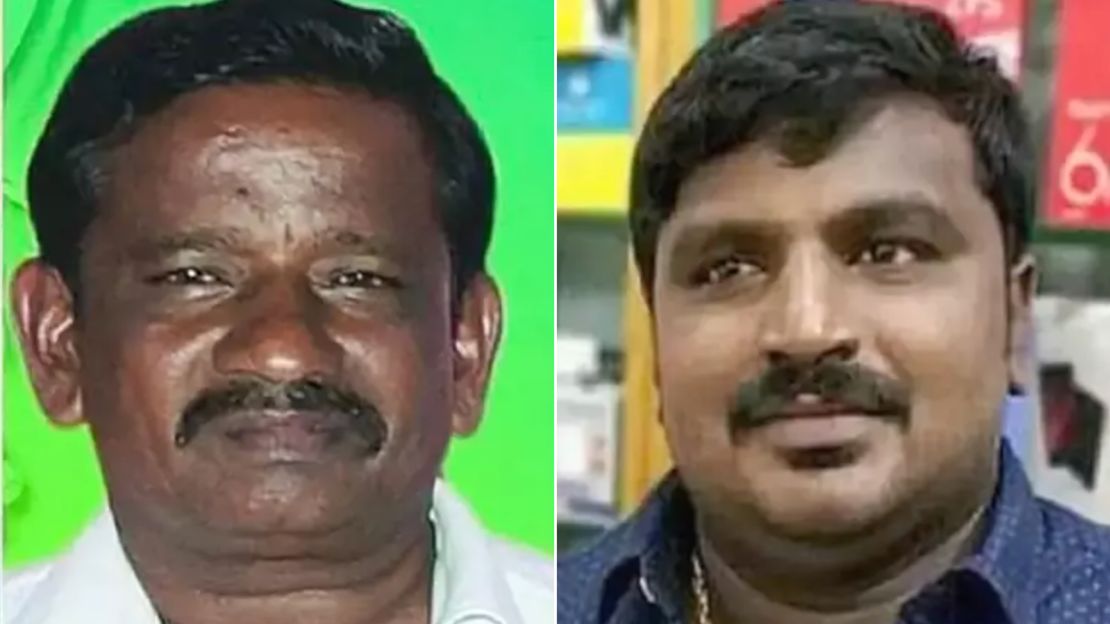
On June 19, Jeyaraj, 62, and his son Bennicks, 32, were selling mobile phones at their shop in Sathankulam, Tamil Nadu, according to court documents. When they refused police requests to comply with coronavirus lockdown rules stating that stores must shut at night, they were arrested.
The father and son – who are only identified in court documents by their first names – were remanded in custody. Three days after their arrest, at 7.45 p.m. on June 22, Bennicks was admitted to the hospital, where he died less than two hours later. Jeyaraj was admitted to the same hospital and died early the next morning.
A video posted by an Indian singer elaborating on the incident, in particular the alleged use of sexual assault as a tool of torture, went viral on social media, sparking further national outrage.
A judicial inquiry is underway, and the Central Bureau of Investigation (CBI) has charged 10 policemen with murder, wrongful confinement, destruction of evidence, misconduct, and furnishing false evidence. One of the policemen subsequently died of Covid-19. The officers have not commented publicly on the allegations, and state police have not responded to CNN’s requests for comment.
On social media and in television debates, people connected the deaths of Jayaraj and Bennicks to the killing of black men by police officers in the United States, and called it “India’s George Floyd moment” – a wake-up call to reform the police.
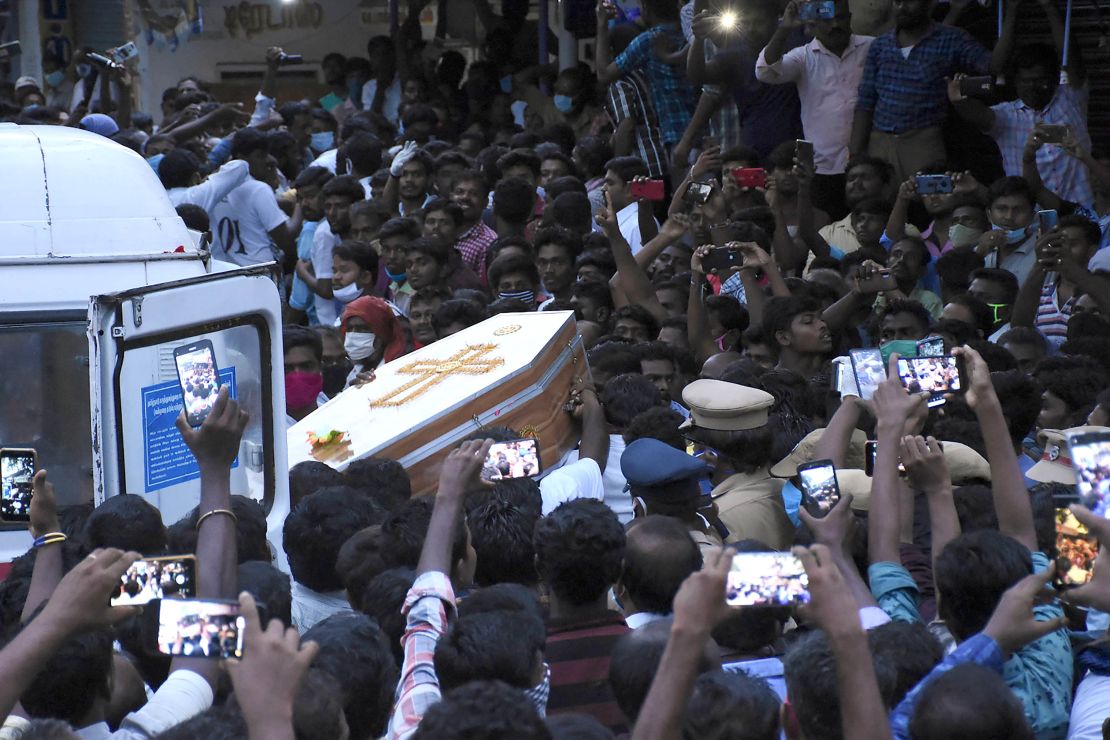
“(Previously) the use of torture in terror investigations or in cases in India’s conflict areas would be justified as being needed to elicit information or maintain order,” says Jinee Lokaneeta, chair of political science and international relations at Drew University in New Jersey, who has authored two books on torture, policing, and violence in India and the US.
But in the Sathankulam incident, it was ordinary shopkeepers from a middle-class caste, Lokaneeta says. That went against the imagination of public justice.
The NCAT Torture in India report found that 60% of those who died in police custody in 2019 were from poor and marginalized communities – Muslims, Dalits and Indigenous tribal communities.
“The poor are easy targets. For the police, the torture or death of the poor comes with no consequence,” says I. Pandiyan, a lawyer and member of Witness For Justice, which works with victims of custodial violence among disadvantaged communities in Tamil Nadu.
An inherited system of abuse
Since gaining independence from colonial rule in 1947, India has had a long, tumultuous relationship with police excess. Force was used against political dissidents during India’s period of Emergency in the late 1970s, and to counter secessionist movements in Punjab, Kashmir and Northeast India.
In recent years, police have been accused of using excessive force to quell left-wing extremists in the so-called “red corridor,” in the west of the country, and today force is often casually employed to disperse peaceful protesters and non-violent mass gatherings.
The problem, critics say, begins with Indian laws, some of which condone, or even encourage, police violence. For instance, anti-terror laws or special laws in conflict-ridden areas, such as the territory of Jammu and Kashmir, sanction the use of violence to elicit information or maintain order.
In individual states, police manuals allow certain officers to authorize the use of violence (formally called lathi charge or baton charge) to control crowds – officers have to subsequently write a report on how this was carried out. More often, lathi charge is done without formal orders. And if there is a public complaint, often the police in the same jurisdiction investigate their own personnel.
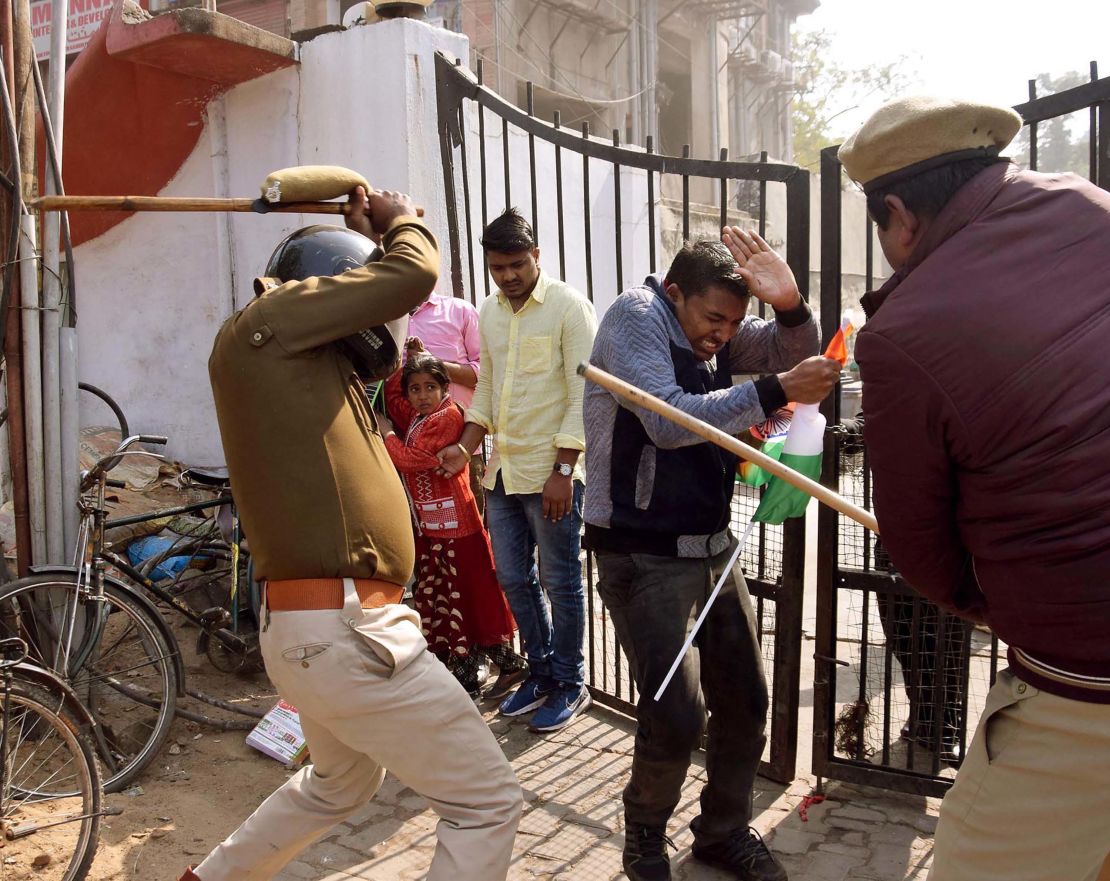
While confessions are not admissible in courts under the Indian Evidence Act, police are legally allowed to use admissions of guilt to initiate the recovery of stolen goods – an outcome often deemed as good as a conviction.
“This encourages police custodial torture,” says Lokaneeta.
Much of the Indian police force’s penchant for using torture as a tool for maintaining law and order dates back to British rule, Lokaneeta says. “We’ve inherited the colonial structure of the police laid down in the Police Act of 1861,” she says, explaining that the act directed police to maintain order through violence and subjugation of subjects. “It was an assertion of power in the British Raj. After independence, this continued … it maintains social hierarchies of caste and class.”
Victims vs the system
Data from India’s National Crime Records Bureau (NCRB) shows that not a single police officer has been convicted for custodial deaths since 2011, while over 860 cases were recorded in the same time period. And in the past five full years, only 3 officers have been convicted for almost 500 cases of other human rights violations, such as torture, illegal detentions and extortion.
“This is unacceptable in a democracy. This is an example of a systemic failure of a criminal justice that seeks to protect its own,” says Chakma from NCAT. “The lack of accountability drives the system of police tortures.”
Through multiple judgments over the years, India’s courts have sought to improve the situation by giving teeth to national and state human rights commissions – quasi-judicial bodies formed to probe complaints of human rights violations, including police torture.
But, as numerous cases of torture show, police find ways to avoid facing justice: either surveillance cameras don’t function or torture occurs outside their range; magistrates do not examine the accused for injuries and place their trust in police accounts; and post-mortem reports are manipulated. The NHRC is rendered toothless when its inquiries are dependent on reports from the local police officers who are accused.
Activists, researchers and crime-beat reporters who spoke to CNN told of shielded torture rooms where police deliberately inflict internal injuries rather than visible bruises. This includes the use of electrocution, and the drilling of pins and needles underneath nails or the soles of the feet. Santana Khanikar, assistant professor at Jawaharlal Nehru University, writes in her book on state violence that torture in police stations is so routine, it is often used to impress spectators.
With low conviction rates and a police force unafraid to use violence, victims of torture often refuse to prosecute the police – that was the case for Ashok Kumar, a poor school bus driver.
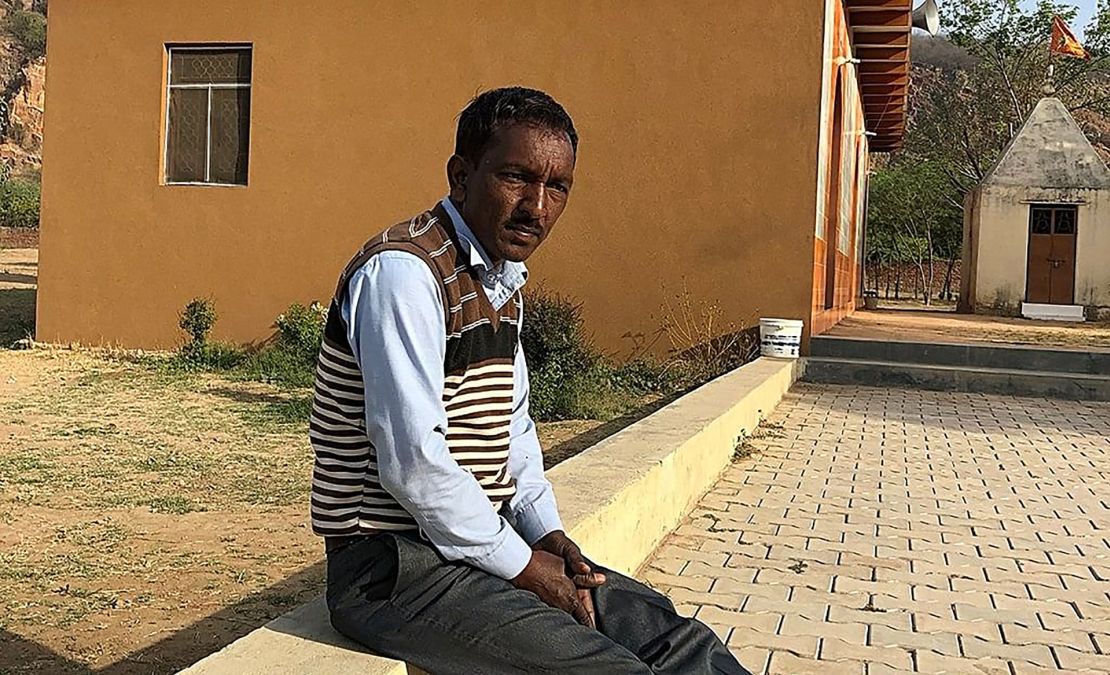
Suspicion fell on Kumar in September 2017 when the body of a 7-year-old child was found in the toilet of an upmarket school near Delhi. Kumar had helped carry the boy’s body to an ambulance.
As the case hit the headlines, the police were under pressure to act. During an interrogation, Kumar confessed, first to the police and then to the media. “I was masturbating in the toilet when the boy saw me … I was out of my mind … I killed him and threw the knife away,” he told reporters, who were allowed to interview him while he was being taken to a courthouse.
When no one else was willing to represent Kumar, a relatively inexperienced lawyer took on the case. “It looked like the police wanted to frame him,” says Mohit Verma, the lawyer, now 29. The police case fell apart in court when the Central Bureau of Investigation (CBI), which took the case from local police, told the judge there was no evidence against him.
Later, Kumar recounted his three days of torture, claiming he was hung upside down like a skinned chicken in a market and beaten repeatedly through the day, his uncle told CNN. The uncle said Kumar believed if he didn’t confess, he would have been killed. In February 2018, he was acquitted.
CBI spokesperson R.K. Gaur said its mandate in this case was to investigate the murder of the child, and therefore he could not speak to the allegations of police abuse. There has been no official request to probe the local police. Efforts to reach the police station in question were unsuccessful, as the officers involved have moved on.
Kumar’s spine still aches and relatives say he is mentally scarred. “He doesn’t carry a phone and we try to protect him from outsiders. We want him to forget this painful chapter,” says his uncle, Samay Kumar.
Verma had suggested they file a defamation case against the police, which could lead to compensation for his ordeal. Kumar refused. “He was scared. He didn’t want to antagonize the police further,” says Verma.
Those who try to seek justice in the courts, often don’t get far.
Kasthuri, who is now 40 years old and belongs to the Kuruvar caste, remembers the night that 10 policemen arrived at her home in the southern state of Tamil Nadu to arrest her husband, Ravi, then 35, in August 2010. She says the police took her husband without explanation. Her younger son was dragged to the door as he clung to his father, she says.
Two days later, she says the police asked her to sign a blank piece of paper. “I refused until I could see my husband. They hit me and forced me to sign,” she says. A few hours later, she was told that Ravi was sick at a nearby government hospital. By the time she got there, his body had been cremated.
Ravi had been taken for questioning regarding an alleged bank theft. The police claimed in their report that when they went to arrest him, Ravi and other alleged thieves attempted to flee. Ravi slipped and was grievously injured, police said.
Others who had been picked up with Ravi told Kasthuri that he had been beaten and given electric shocks. His last words were: “Mother, save me,” before he collapsed at the station, they said.
Kasthuri’s police complaint resulted in an inquiry. The initial post-mortem supported her suspicions, as it notes that Ravi had five injuries on his body and died due to “polytrauma,” from multiple injuries. However, during the course of the court hearings, the police ordered a second opinion on the post-mortem report, which declared that the injuries were “superficial” in nature and Ravi had died of a heart attack. By 2015, the case was dismissed.
Kasthuri is illiterate and scrapes a living selling baskets. However, she was determined to get justice for the death of her husband and, with help, has taken the case to a high court appeal. The case has not yet been heard.
The National Human Rights Commission did not reply to CNN’s request for comment on the case. Getting comment from Indian officials on past cases is notoriously difficult: police officers change stations every few years, and scant electronic records are kept, meaning case files are often prohibitively hard to locate, preventing new staff from reviewing old case files.
“Justice will come some day. It may not come from the courts, but it will come from a divine power. That’s what will keep me going on every day,” Kasthuri says.
‘A bullet in the knee ensures they’ll hobble’
There is a strange dichotomy at the heart of the Indian people’s relationship with the police.
On the one hand, there is an acute mistrust in the criminal justice system. But on the other, there is often overt support for police vigilantism.
A study titled “Status of Policing in India Report 2018,” conducted by Common Cause, a public policy NGO, and the Centre for the Study of Developing Societies, found 44% of 15,562 respondents were somewhat or highly fearful of police; while many respondents said they had known victims of police torture, firing and baton charge.
Despite all that, nearly half of Indians polled in the 2018 study thought there was nothing wrong with police violence towards criminals.
India’s criminal justice system is characterized by long trials and low conviction rates. In that environment, police violence is often seen as, ironically, a shortcut to justice.
Prakash Singh, a former head of police of two critical states – Uttar Pradesh, India’s most populous state, and Assam, a conflict-ridden state in India’s northeast – says that “some degree” of violence is needed to maintain law and order. “Experience shows that if there is no enforcement, no one will obey the law. And for this, the fear of the police is a must. And this is done through the threat or the actual use of force,” he says.
A senior police officer, who asked to remain anonymous, spoke of daily requests and pressure from complainants to “beat up” the accused. “They aren’t bothered about the legalities or evidence collection. They want to see the accused punished and to be taught a lesson,” he says.
In the 2019 survey conducted by Common Cause, 37% of officers believed police should hand out “small punishments” for minor offenses rather than go through the courts. And 83% of police officers polled said there was “nothing wrong” in beating up criminals to extract confessions.
“No one likes to do this. But it is difficult getting a confession… We have to take the larger view of reducing crime in society,” said one police officer, who asked CNN not to reveal his identity.
In Bengaluru, another officer described the tactic of shooting “criminals” in the knee to reduce recidivism. “We arrest them, they get bail, come out and repeat the same offenses. We do not have the resources to go through this charade again and again. A bullet in the knee ensures they hobble throughout their lives. They will learn a lesson after all this,” said the officer, who also requested anonymity.
A police force at breaking point
India is one of only five countries to have not ratified the United Nations Convention against Torture (UNCAT).
Among the prerequisites for ratification is a domestic anti-torture law. Indian activists believe such a law could lead to greater accountability and better investigation processes. India’s anti-torture law, drafted in 2010, has not been passed by parliament. The Home Ministry said the draft bill, revised in 2017, is being discussed with individual states, which control police departments, for their views.
But V. Suresh, National General Secretary of People’s Union for Civil Liberties (PUCL), a human rights NGO, says that for any reform to be effective, it must address the “systemic issues plaguing the police and criminal justice system and the stresses it puts on a policeman.”
In short, India’s police system is overstretched and understaffed. Official government data shows that of the 2.6 million sanctioned police posts in the country, nearly 530,000 – about 20% – are vacant. India has on average 158 police officers for every 100,000 people, fewer than the world’s average. This is also much fewer than in the US (210) and the EU (340).
The 2019 survey of police officers found that, on average, they work for 14 hours a day, and half the force is not able to take their weekly day off. Three in four police officers believe the workload makes it difficult for them to do their job.
A Bengaluru-based police officer, who asked for anonymity, told CNN: “People are frustrated with the police, without realizing that the police themselves are frustrated with the policing system. I’ve been on near-continuous duty since the Covid lockdown. We worked without safety equipment ourselves and many in our police station contracted Covid. Our shifts were endless, and our holidays were canceled because there were few staff working.
“There is no separate unit in police stations only to look at certain crimes. A person could be in charge of a murder investigation, a theft, a burglary and many cases from the past, which are in trial phase. Apart from this, he has to be on patrol, maintain law and order at protests or rallies,” the officer said.
Serving officers who spoke to CNN say that investing in the police force will reduce incidents of custodial violence. In the 2018-2019 financial year, only 1.3% of the country’s $18.9 billion police budget is spent on training personnel and just 1.8% is spent on modernization such a providing new equipment and forensic science laboratories.
In India, it can take months – or even years – for a forensic report on a sample. But investments are not a political priority, says Singh, the former head of police of two critical states and the current chairman of the think tank Indian Police Foundation.
Singh believes less political control over the police would allow good officers to change the culture from the inside. Pressure from politicians was the biggest hindrance to investigations, according to 28% of officers surveyed. Other more minor reasons included departmental pressures and a lack of witnesses and time.
India’s Home Ministry did not respond to CNN’s questions on shortages of police staff, training and budgets, reports of custodial deaths, and why India has not passed an anti-torture bill so it can ratify the UN Convention against Torture.
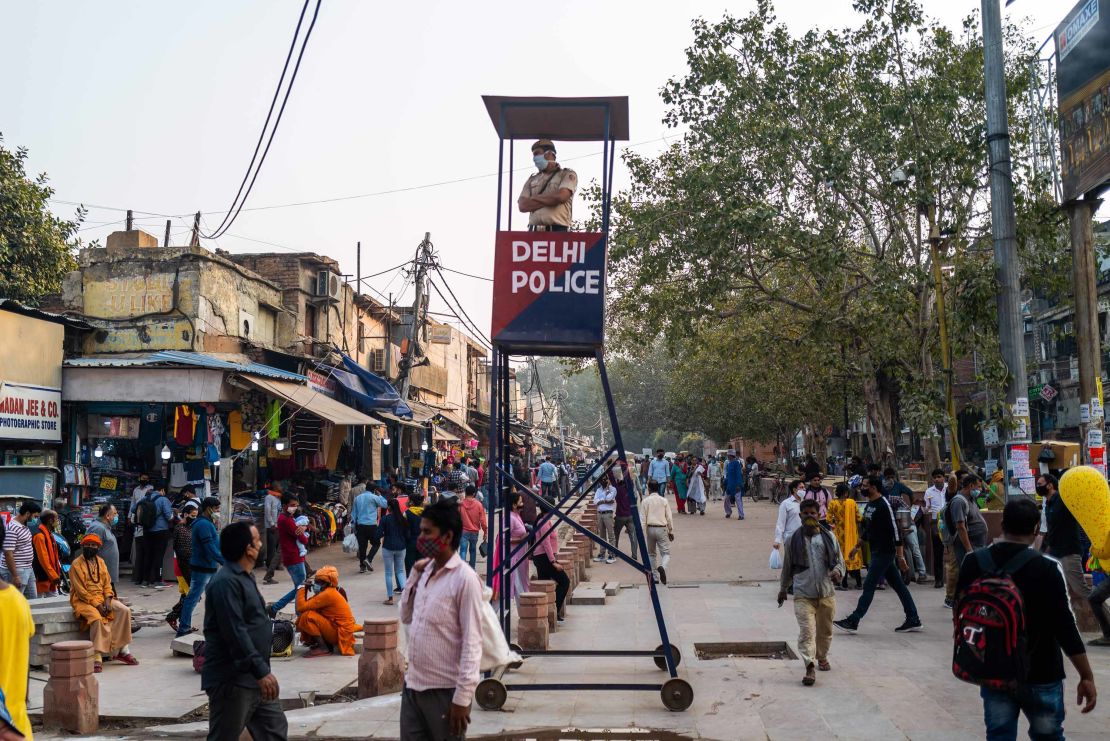
R.K. Raghavan, former head of India’s Central Bureau of Investigation and India’s division of Interpol, however, cautioned against reforms that would “emasculate” the police force.
“If reforms are to change the behavior of the average policeman on the streets, then it is fine. It needs time and money. If reform means abjuring of force by policemen in pressure situations, then it is an entirely different proposition. The real danger would be reforms that emasculate our police forces,” he says.
Months after the killing of the father and son that caused such uproar, India’s “George Floyd” moment has virtually faded away. The video by the Indian singer, which played an important role in galvanizing public outrage, was pulled from social media. The police said her narrative “sensationalized” events and “promoted hatred” against the force.
It’s a long road to justice for Shankar Bajania and the group of 11 who claim they were tortured for allegations of theft. Unlike many victims of custodial torture, the group have decided, with the help of the NGO Nomadic Communities Support Forum, to take their fight to the courts. A petition for an impartial inquiry has been rejected in the lower courts, and they’re now preparing to approach the high court.
More than a year after he was allegedly tortured and released from custody, Bajania still feels pain on his feet and back. He takes painkillers to continue working and bring food home to his five children.
“We’re all suffering in our own way. But we’re all united in this. I’ve known Hira Bajania for 30 years. He didn’t deserve to die on an allegation of a crime we know he did not commit,” he says. “There has to be some justice for this.”
Story editing by Jenni Marsh and Hilary Whiteman. Design and graphics by Jason Kwok and Natalie Leung. Data editing by Krystina Shveda. Development by Marco Chacón. Video by Lauren Cook. Additional video production by Temujin Doran. Photo research by Sarah Tilotta and Sheila Sarmiento. Additional story production by Julia Hollingsworth.

